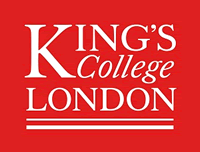Dr M Deprez
Applications accepted all year round
About the Project
1st Supervisor - Dr Maria Deprez
2nd Supervisor - Dr Marc Modat
The aim of this project is to take advantage of state-of-the-art machine learning algorithms to improve our understanding of brain development and neurocognitive outcomes in babies born preterm. During early life the brain undergoes rapid development. Magnetic resonance imaging enables non-invasive acquisition of snapshots of the developing brain across multiple subjects. By combining these snapshots we can characterise the developmental trajectory of a healthy brain. This requires finding anatomical correspondences between snapshots of different individuals, gestational ages and imaging modalities. The successful applicant will develop novel deep-learning based algorithms to establish such correspondences while dealing the rapid change of brain shape and tissue contrast on MRI. A four-dimensional model of the brain development over time will be created and utilised to detect abnormalities, predict developmental trajectories and find biomarkers of neurocognitive outcomes for individual babies, by linking imaging with clinical and genetic information.
Machine learning, nowadays referred to as AI, has had a large impact on the field of medical image analysis and recently opened new avenues of research. This project aims at taking advantage of such algorithms to address a key clinical challenge: neurocognitive deficits in preterm babies.
The brain undergoes dramatic changes, such as cortical folding and myelination, during the foetal period and early life. Preterm birth disrupts these developmental processes, resulting in lifelong neurocognitive problems, ranging from cerebral palsy to behavioural and learning difficulties. MRI is an excellent source for potential biomarkers of the neurodevelopmental outcomes. Though many correlates of preterm birth have been identified on MRI, their predictive capability has so far been limited. One major source of prediction error is that rapid changes in shape and MR contrasts of the developing brain can easily mask effects related to preterm birth and early signs of disease.
The aim of this project is to combine state-of-the-art machine learning approaches with spatio-temporal modelling of brain development to identify biomarkers for prognosis of developmental outcomes in preterm babies. Developing Human Connectome Project provides structural, diffusion and functional MRI of 500 foetal and 1000 term-born and preterm neonatal subjects with associated clinical and genetic information. By discovering patterns in this rich database, we hope not only to find biomarkers for prediction of the neurocognitive outcomes but potentially also identify underlying biological mechanisms ultimately leading to novel therapies for preterm babies.
Key technical aspects:
1. Establishing correspondences between images acquired at different gestational ages is extremely challenging due to rapid maturation (morphological and microstructural). The search spaces of image registration algorithms are limited to those constrained by physical or mathematical models. However, the changes in the developing brain require complex models that cannot be easily formulated. They need to spatially adapt to concurrently model large deformations (such as in the cortex) as well as stiff behaviours (deep grey matter). Additionally, ongoing myelination processes altering MRI signals wrongly influence the results. Through metric learning and taking advantage of a rich dataset, that encompass scans of different characteristics, we will (i) learn the space of transformations to recover such challenging mapping and (ii) develop a tool that will be able to effectively capture morphological differences across time and individual.
2. Current spatio-temporal modelling methods for the developing brain mostly rely on estimation of average models at discrete time points and ad-hoc regularisation over time. We will adapt approaches that have been successfully applied to capture spatio-temporal changes in the elderly brain. Through the use of velocity field, such approaches allow to generate very refined trajectories by minimising distance to all observations in an iterative manner, thus ensuring smooth and continuous evolution in time.
3. Mixed effect models will be used to combine imaging and non-imaging data, to characterise whether different brain areas are developing normally and how early we can detect abnormalities at a population level. This information will then be used to extract deep features - biomarkers for single subject prognosis.

 Continue with Facebook
Continue with Facebook

